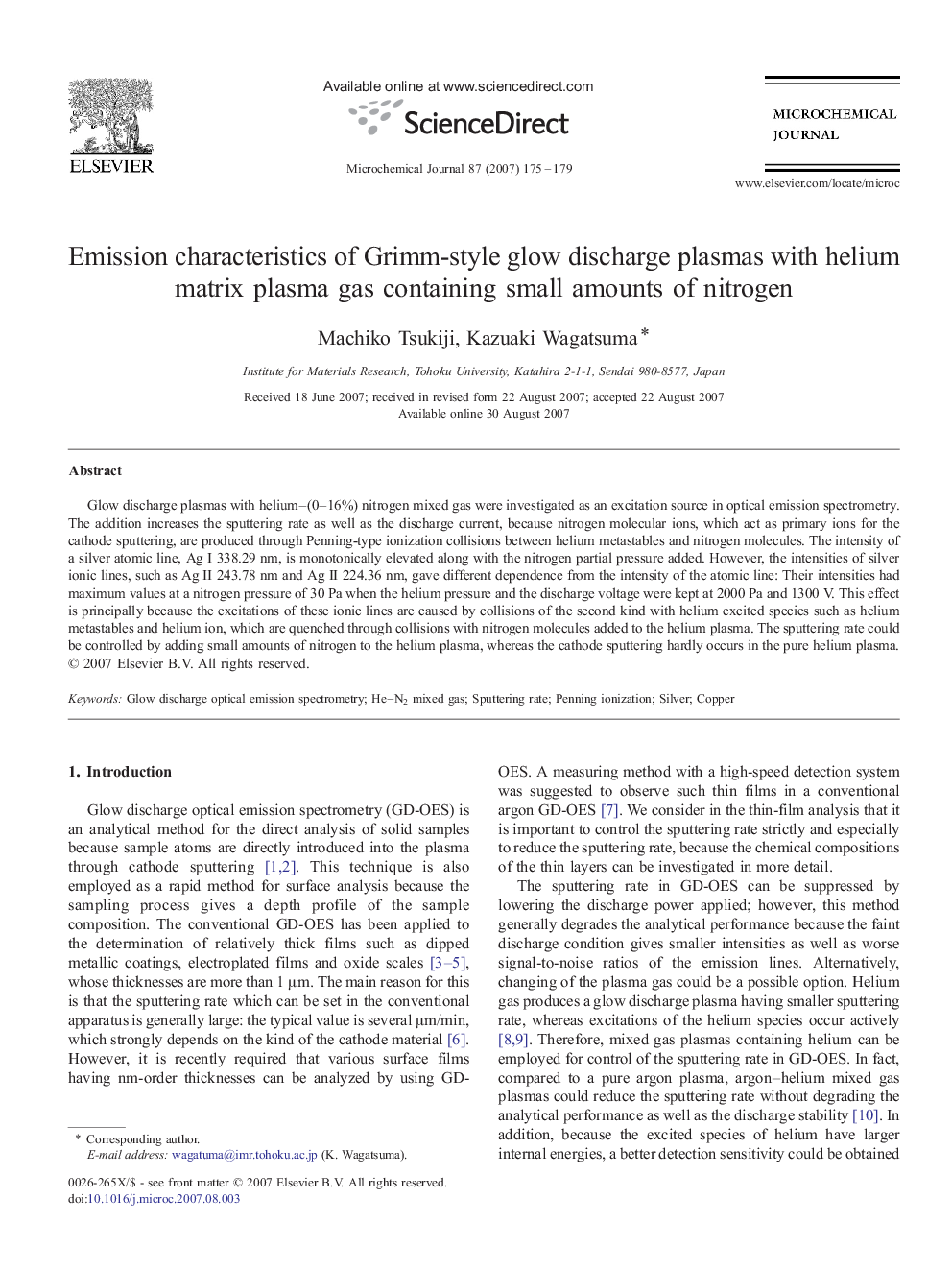| Article ID | Journal | Published Year | Pages | File Type |
|---|---|---|---|---|
| 1228234 | Microchemical Journal | 2007 | 5 Pages |
Glow discharge plasmas with helium–(0–16%) nitrogen mixed gas were investigated as an excitation source in optical emission spectrometry. The addition increases the sputtering rate as well as the discharge current, because nitrogen molecular ions, which act as primary ions for the cathode sputtering, are produced through Penning-type ionization collisions between helium metastables and nitrogen molecules. The intensity of a silver atomic line, Ag I 338.29 nm, is monotonically elevated along with the nitrogen partial pressure added. However, the intensities of silver ionic lines, such as Ag II 243.78 nm and Ag II 224.36 nm, gave different dependence from the intensity of the atomic line: Their intensities had maximum values at a nitrogen pressure of 30 Pa when the helium pressure and the discharge voltage were kept at 2000 Pa and 1300 V. This effect is principally because the excitations of these ionic lines are caused by collisions of the second kind with helium excited species such as helium metastables and helium ion, which are quenched through collisions with nitrogen molecules added to the helium plasma. The sputtering rate could be controlled by adding small amounts of nitrogen to the helium plasma, whereas the cathode sputtering hardly occurs in the pure helium plasma.
